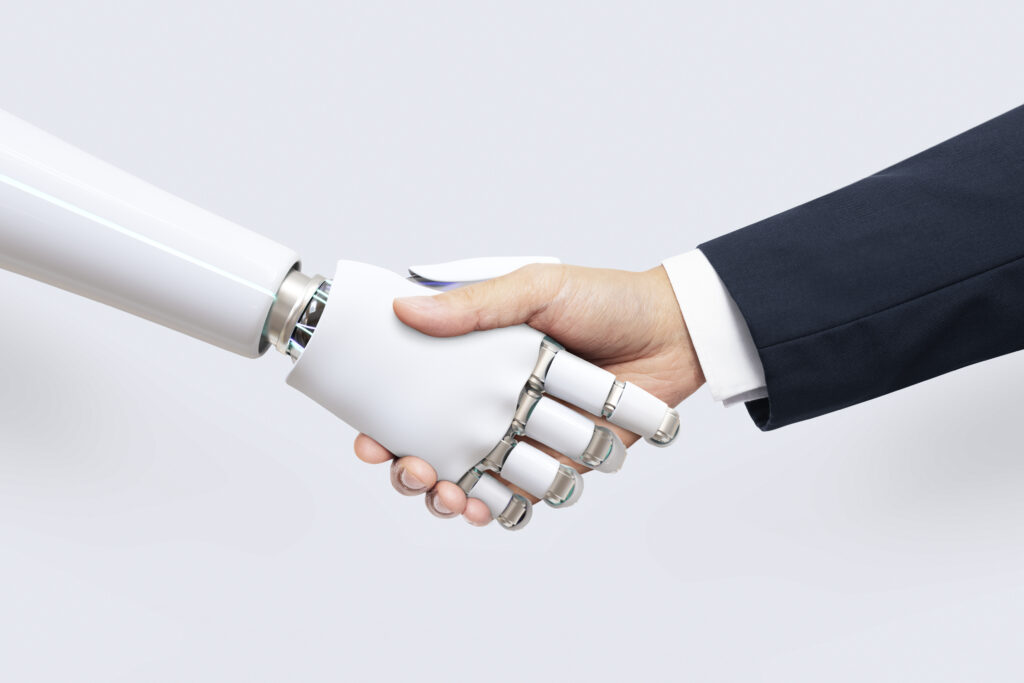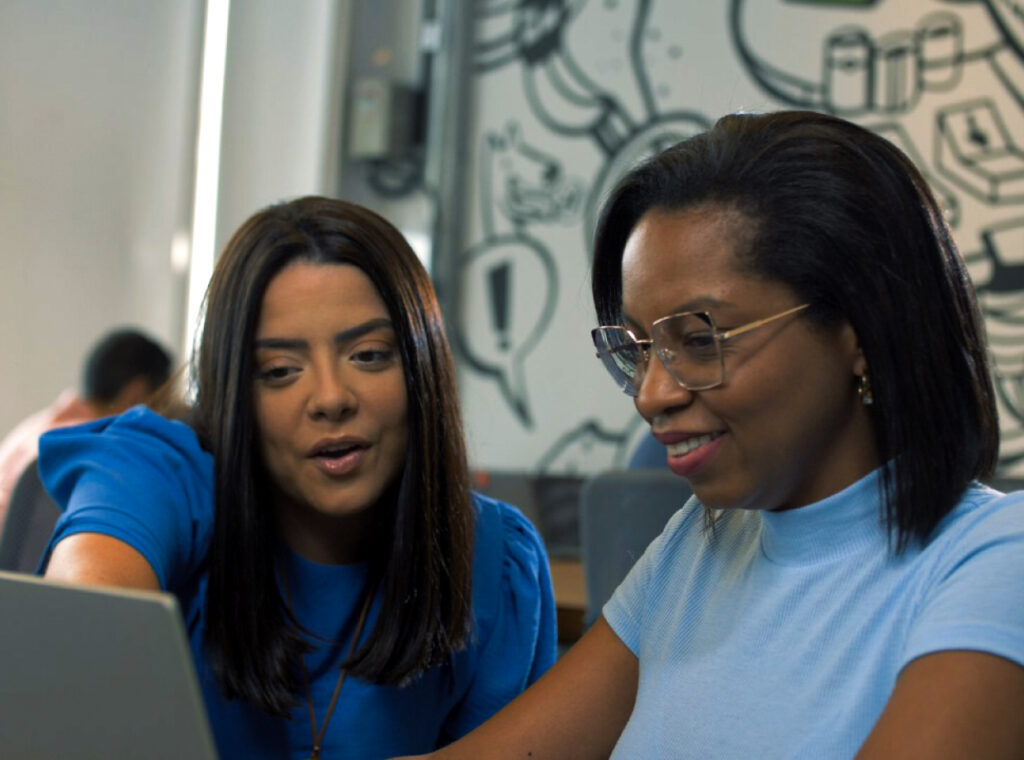1. Introduction
Have you ever stopped to think that that image that caught your attention or that creative text that surprised you could not have been made by a human?
By 2024, more than half of Brazilians (54%) had already used general AI tools , according to Ipsos survey . The number places Brazil above the global average (48%) and shows that this technology has left the laboratory for our daily lives.
AI Generative is redefining what we mean by creativity . It creates images, composes songs, writes articles, generates codes - all in seconds and with surprising results. But how far does this revolution go? And where does she stumble?
In this article, we will explore how Generative AI works, its creative and business possibilities , as well as the ethical and technical challenges that surround this innovation. Prepare yourself to understand how human creativity and artificial intelligence are merging, and what it means to the future of creation.
Good reading!
2. What is and how does the generative AI work?
If you have already interacted with a chatbot that writes whole texts or saw hyperrealist images generated from words , then you have already bumped into the Generative AI. But after all, what is it exactly?
Simply put, AI Generative is a type of artificial intelligence capable of creating new content, whether texts, images, music, videos or even lines of code. Not only does it recognize standards, but can use what it has learned to generate something original, based on a large volume of data.
This technology works based on advanced Machine Learning models, the most common are transformers and generative adversarial networks, known as Gans (in English, Generative Adversarial Networks ):
- Transformers are models that understand and generate language with high accuracy . They are behind tools like ChatgPT, and can analyze a context, predict what comes next and generate coherent answers or content;
- Gans act as a kind of "game" between two artificial intelligences . One creates something (like an image), and the other tries to identify if it is real or generated. With each attempt, both are improving, reaching to the point of being so realistic that even humans have difficulty realizing the difference.
Both models are trained with huge volumes of data (texts, images, sounds, codes), and thus learn to imitate standards and structures of human creation to generate something new.
What differentiates the general AI from other types of AI is precisely its ability to create original content , not just recognize or classify what already exists.
2.1. From science fiction to reality: the journey of the general
The idea of machines capable of creating always inhabited the collective imagination , from the tales of US writer Isaac Asimov (1920-1992) to film scripts such as “Her” (2013) and “Ex-Machina” (2014). For a long time, all of this seemed like a distant future, reserved for science fiction.
However, this reality began to change with the evolution of algorithms and the increase in processing capacity . In 2009, the creation of Imagenet, a bank with millions of labeled images, offered a powerful basis for training computational vision models . Already in 2010, researchers demonstrated that deep neural networks, with GPUS support, were able to overcome traditional methods in complex tasks, such as pattern recognition. These advances paved the way for the emergence of the modern Generative Ia.
Already in 2014, the gans marked a turning point: for the first time, algorithms managed to create such realistic images that they could fool even humans . A few years later came the transformers , such as GPT-2 and GPT-3, which changed the game in text production.
Today, these technologies are more popular and affordable , integrated with platforms ranging from graphic design to video editing, customer support to marketing . Thus, we can say that the Generative AI has gone out of fiction to become a daily ally of creative, developers and companies . And that is just the beginning.
Now that we understand what this technology is and how it came to life outside the movies, let's look at the real possibilities it already offers - both in the artistic field and business?
3. Possibilities without limits (or almost)
If creativity before was exclusively human territory, today it is shared, at least in part, with algorithms capable of imagining, writing, composing, illustrating and even programming . AI Generative not only follows ideas, but also proposes new solutions and paths, expanding what is possible to create in record time.
Next, we will explore how this technology is already being used to create what seemed impossible, and how it also begins to transform business gear.
3.1. Creating the impossible
Nowadays, Ia and Art are not opposite, but allies. In a few seconds , algorithms can generate original illustrations, compose custom songs or write whole itineraries based on a simple briefing .
See some creative applications that are already in real use:
- Automated Design : Tools such as Dall · E, Midjourney and Runway generate unpublished images and videos from simple text commands. This expands creative capacity and accelerates prototyping and visual
storytelling - Texts, scripts and narratives on demand : platforms such as chatgpt and jasper help from content creation to brands to script structuring, brainstorming ideas and language refinement;
- AI -generated music : Tools such as Sun and Aiva allow us to compose soundtracks, jingles and personalized themes based on gender, tone and objective of the project.
Result? More agility, new aesthetic references and expansion of creativity, with AI as a co -author, not substitute .
3.2. I was going to the business gears
In companies, AI Generativa is no longer a technological curiosity to becoming a real competitive differential . She enters behind the scenes to optimize time, predict scenarios and customize interactions:
- Code Generation and Prototypes : With Git Hub Copilot, developers receive real -time code suggestions, which accelerates deliveries and reduces errors in software ;
- Marketing with Hyperpersonalization : Generative AI platforms adjust messages to different audiences, channels and moments, creating ads, emails and custom-made creative parts in minutes;
- Predictive modeling for strategic decisions : Companies are using IA to simulate scenarios and predict behaviors based on historical data, being useful for areas of risk management, supply chain , pricing , among others.
The benefits could not be better: more speed in deliveries, smarter decisions, and scale operational efficiency .
But like all powerful technology, the Generative AI also imposes challenges - technical, ethical and creative . It is time to look across the coin and understand where the limits of this revolution are. Keep following!

4. The other side of the coin: invisible limitations
The Generative AI impresses: she creates, writes, draws, composes, answers. But despite its "technological brightness," it is still far from perfect , and understanding these limitations is important to use the tool with awareness and strategy.
From creative illusions to complex ethical issues, AI boundaries reveal that, behind the magic, there are weaknesses that cannot be ignored .
4.1. What the Generative AI still can't do
As sophisticated as they may be, the Generative AI models still operate based on statistics, standards and predictions . This means that they have no real understanding, consciousness or sense of purpose. This creates some important limitations:
- Genuine creativity or just remix ? : AI generates original content, but they are derived from a reorganization of existing references. There is no intuition, no creative rupture. An example: generated images may seem unpublished, but often contain recurring traits of known works;
- Lack of context and intentionality : AI does not understand the moment, the public or the emotional impact of what it is producing. A classic case: chatbots who suggested inadequate or insensitive answers in automated care, as they do not capture the tone of the situation;
- Hallucinations and factual errors : Models like ChatgPT can “invent” book names, statistical data or even cite nonexistent sources, which is called “hallucination”. A famous example was when a US lawyer used AI arguments with completely fictional jurisprudence . Researchers such as Nicholas Diakopoulos Professor Northwestern University have been warning of the risks of blindly relying on AI -generated content, especially in areas such as Communication and Journalism. In his article “The Generative Ai in the Newsroom Challenge, he highlights the importance of human supervision to prevent these systems from becoming vectors of misinformation and loss of credibility;
- Dependence on what has already been done : AI learns from the past. This means that their results reflect standards already registered, including prejudice, stereotypes or outdated information. It's like trying to predict the future looking only at the rearview mirror.
In short, the Generative AI is powerful but not infallible. And so it always needs critical and contextual human supervision .
4.2. Ethical Risks and Dilemmas
As Ia becomes more convincing, the responsibilities of those who use it also increase. We are facing dilemmas that mix technology, society, politics and culture, such as:
- Disinformation and Deepfakes : In 2022, a fake video of Ukrainian President Volodymyr Zelensky asking for surrender on social networks . Created by AI, content has deceived thousands of people before being denied - a clear example of how technology can be used to manipulate public opinion;
- Intellectual property and authorship : If an AI generates a song from styles of real artists, who owns the work? Cases such as the music generated with the “voice” of Drake and The Weeknd, unauthorized, lighting global debates about authorship, use of image and monetization of AI -generated works;
- Impact on the creative market : writers, illustrators and composers already feel the pressure of automation. Although AI can be a creative partner, it also raises discussions about work replacement, devaluation of creative processes and invisibility of human effort .
These are in progress debates, with no ready answers , but with one certainty: using Ia Generative requires responsibility, criterion and applied ethics. And it is precisely in this balance between power and limit that comes in the role of companies, creators and platforms.
With that in mind, in the next section, let's address how AI can be an ally of creativity without replacing humans in the process.
5. The fine line between creating and recreating
In a world where algorithms generate images in seconds and write texts with impressive fluidity, an inevitable question arises: where end human creation and recreation begins by the machine?
The Generative AI does not create in the emptiness. It depends on pre-existing data . What seems new is often an ingenious recombination of what already exists. This is where the irreplaceable role of the human being comes in.
Creating, in the deepest sense, involves intention, context and purpose. It means connecting ideas to emotions, timing , culture and impact - aspects that have so far been exclusively human. On the other hand, AI can be seen as a new creative raw material, something that accelerates sketches, expands possibilities and suggests new paths .
As the Turkish American artist Refika highlights: "Artificial intelligence is a mirror for humanity. It all comes down to who we are as humans."
This is not an opposition, but intelligent curatorship : the differential is not to generate more, but to choose better. Nor is it about replacing the creative process, but redefining where the truly human part of it begins.
In practice, professionals and companies that understand this fine line are those that extract the best of AI - not as magic, but as a strategic lever of creativity, productivity and value.
6. It was with purpose: what Skyone delivers to those who want to innovate with clarity
Getting here is understanding that AI Generative is not just a trend: it is a key turn in the way companies and people produce, create and make decisions . But transforming this potential as a real result requires more than technological curiosity. It requires reliable structure, strategy and partners.
That's where we at Skyone came in. Our mission is to simplify access to technology , with safety, scalability and business intelligence. We support companies in their innovation processes, creating the necessary bases for technologies such as Generative AI to be integrated ethically, efficiently and aligned with the organization's objectives.
We operate with a unique and robust platform that allows:
- Modernization of legacy environments , facilitating the transition to digital;
- Orchestration of cloud solutions , focusing on performance and governance;
- Integration between systems, data and applications , ensuring fluidity and scalability;
- Centralized and safe management , which prepares companies to operate with data intelligence.
More than enabling technology, we have prepared companies to innovate clearly , taking control of their digital ecosystem with future vision and responsibility. Because, in the end, it is not just about using AI: it is about using with purpose, consciousness and solid base to grow.
7. Conclusion
Creativity remains human, but now it has company. This is because AI Generative is no longer just a technological innovation to becoming a new component of the creative, strategic and operational process .
Throughout this article, we have seen how it works, its technical origins and how it is being applied in areas such as art, design , marketing , S software and business decision making. We also explore its technical and ethical limitations , and why it is still essential to maintain critical, human curatorship and conscious use.
The central point is that, as advanced as it may seem, AI does not think, do not feel, or understand purpose . It “only” generates based on data. We humans have created based on intention, context and vision of the future. Therefore, the general AI should not be seen as a substitute, but as a catalyst of ideas and process facilitator . When well applied, it does not erase authorship - it expands the possibilities of expression and value delivery.
In short, creating, innovating and transforming remains aspects inherent in human role. AI only helps us do this with more power and agility .
Did you like this text and want to keep exploring? Access our blog and discover other content about innovation, technology, productivity and business future!
Interactive extras
If you have gotten here, you have understood how Generative AI is turning the way we created, planned and innovate. But how about going beyond theory?
Next, we invite you to experiment, reflect and put into practice some of the concepts explored throughout the article, with lightness, curiosity and, of course, creativity!
1) Live Test: Examples of Generative AI Creating images, music or texts
Try it in practice! Click on the links below to generate, in real time, images, texts or songs with Generative AI. Understand how she responds to her commands and see how far automated creativity can go:
Explore, test and realize that the result always depends on who asks the question.
2) Checklist : How to apply Generative Ethically in your business or creative project
Before adopting I was Generative in your project or business, go through this simple and strategic checklist :
- Am I clear about the real goal of IA in my workflow?
- Is AI supporting creation or replacing critical thinking?
- Am I reviewing and adjusting everything she generates before publishing?
- Am I respecting context, ethics and originality?
- Is there transparency about the use of AI for those who consume the content?
- I'm using it as a performance lever and not as a quality shortcut?
If you answered “yes” to everyone, you are on the right track: uniting technological power with strategic awareness .

LUIZ EDUARDO SEVERINO
Passionate about artificial intelligence and its real -world applications, Severino explores how AI can transform business and boost innovation. On Skyone's blog, he demystifies trends, explains advanced concepts and shows the practical impact of AI on companies.




